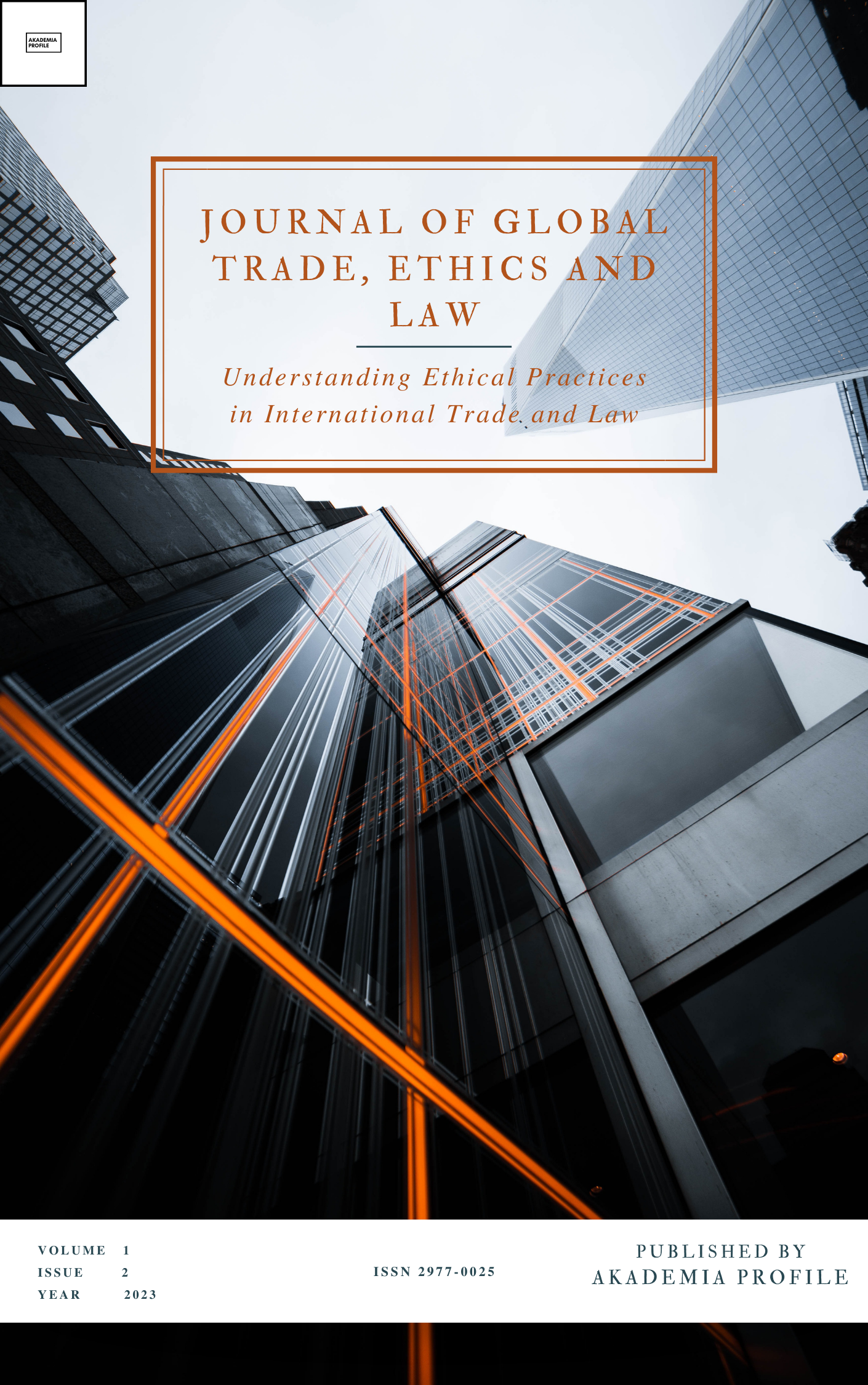
Published 2023-06-01
Keywords
- Digitalization,
- Economic Growth of China and USA,
- Internet Cost,
- Internet Users,
- Cobb-Douglas Production Function
Copyright (c) 2023 Journal of Global Trade, Ethics and Law

This work is licensed under a Creative Commons Attribution 4.0 International License.
How to Cite
Abstract
Digitalization is a key component of the world economy from past recent years. Based on that in our study, we are taking part in the literature on how digitalization changes the economy of the USA and China. The study aims to investigate the impact of the Internet on the economic growth of China and the USA from 1990 to 2019. After we used the Cobb-Douglas production function, the outcomes analysis that there is a positive effect of the Internet on the Chinese economy and the United State economy. Additionally, internet cost and internet users also have a positive impact on the economic growth of China as well as the USA. Furthermore, the outcomes of our study give suggestions to the Chinese and the United State policy maker to motivate investors to invest in the field of information communication technology to improve the living standard and increase the economic growth of a country.
Downloads
References
- Broughel, James, and Adam D. Thierer. 2019. “Technological Innovation and Economic Growth: A Brief Report on the Evidence.” Social Science Research Network, March. https://doi.org/10.2139/ssrn.3346495.
- Chou, Yen-Chun, Howard Hao-Chun Chuang, and Benjamin B. M. Shao. 2014. “The Impacts of Information Technology on Total Factor Productivity: A Look at Externalities and Innovations.” International Journal of Production Economics 158 (December): 290–99. https://doi.org/10.1016/j.ijpe.2014.08.003.
- Barreto, María Beatriz, and Patricia Ritter Burga. 2014. “The Effect of Internet and Cell Phones on Employment and Agricultural Production in Rural Villages in Peru.” http://udep.edu.pe/cceeee/files/2014/07/3B_2_RitterGUERRERO.pdf.
- Manyika, J. and Charles Roxburgh. 2011. “The great transformer : The impact of the Internet on economic growth and prosperity.” https://www.mckinsey.com/~/media/mckinsey/industries/technology%20media%20and%20telecommunications/high%20tech/our%20insights/the%20great%20transformer/mgi_impact_of_internet_on_economic_growth.pdf.
- Melville, Nigel P., Vijay Gurbaxani, and Kenneth L. Kraemer. 2007. “The Productivity Impact of Information Technology across Competitive Regimes: The Role of Industry Concentration and Dynamism.” Decision Support Systems 43 (1): 229–42. https://doi.org/10.1016/j.dss.2006.09.009.
- Mitra, Arup, Chandan Sharma, and Marie-Ange Veganzones-Varoudakis. 2014. “Trade Liberalization, Technology Transfer, and Firms’ Productive Performance: The Case of Indian Manufacturing.” Journal of Asian Economics 33 (August): 1–15. https://doi.org/10.1016/j.asieco.2014.04.001.
- Schreyer, Paul. 2000. “The Contribution of Information and Communication Technology to Output Growth.” OECD Science, Technology and Industry Working Papers, March. https://doi.org/10.1787/151634666253.
- Yoo, Inhye, and Chan-Goo Yi. 2022. “Economic Innovation Caused by Digital Transformation and Impact on Social Systems.” Sustainability 14 (5): 2600. https://doi.org/10.3390/su14052600.
- Young, Sherman. 2001. “What’s the Big Idea? Production, Consumption and Internet Regulatory Discourse.” Media International Australia 101 (1): 9–18. https://doi.org/10.1177/1329878x0110100104.
- Cobb, Charles M., and Paul H. Douglas. 1928. “A Theory of Production.” The American Economic Review 18 (January): 139–65. https://ci.nii.ac.jp/naid/10025904036.
- Shin, Seungjae, and Burak Eksioglu. 2015. “An Empirical Study of RFID Productivity in the U.S. Retail Supply Chain.” International Journal of Production Economics 163 (May): 89–96. https://doi.org/10.1016/j.ijpe.2015.02.016.
- Brown, Murray, and National Bureau of Economic Research. 1967. The Theory and Empirical Analysis of Production. New York : National Bureau of Economic Research.
- Morrison, Wayne A. 2019. China’s Economic Rise: History, Trends, Challenges, and Implications for the United States. http://fpc.state.gov/documents/organization/219638.pdf.
- Arif, Ankasha, Misbah Sadiq, Malik Shahzad Shabbir, Ghulam Yahya, Aysha Zamir, and Lydia Bares. 2020. “The Role of Globalization in Financial Development, Trade Openness and Sustainable Environmental -Economic Growth: Evidence from Selected South Asian Economies.” Journal of Sustainable Finance & Investment 12 (4): 1027–44. https://doi.org/10.1080/20430795.2020.1861865.
- Dollar, David, and Aart Kraay. 2003. “Institutions, Trade, and Growth.” Journal of Monetary Economics 50 (1): 133–62. https://doi.org/10.1016/s0304-3932(02)00206-4.
- Eaton, Jonathan, and Samuel Kortum. 2001. “Technology, Trade, and Growth: A Unified Framework.” European Economic Review 45 (4–6): 742–55. https://doi.org/10.1016/s0014-2921(01)00129-5.
- López, Ricardo A. 2005. “Trade and Growth: Reconciling the Macroeconomic and Microeconomic Evidence.” Journal of Economic Surveys 19 (4): 623–48. https://doi.org/10.1111/j.0950-0804.2005.00264.x.
